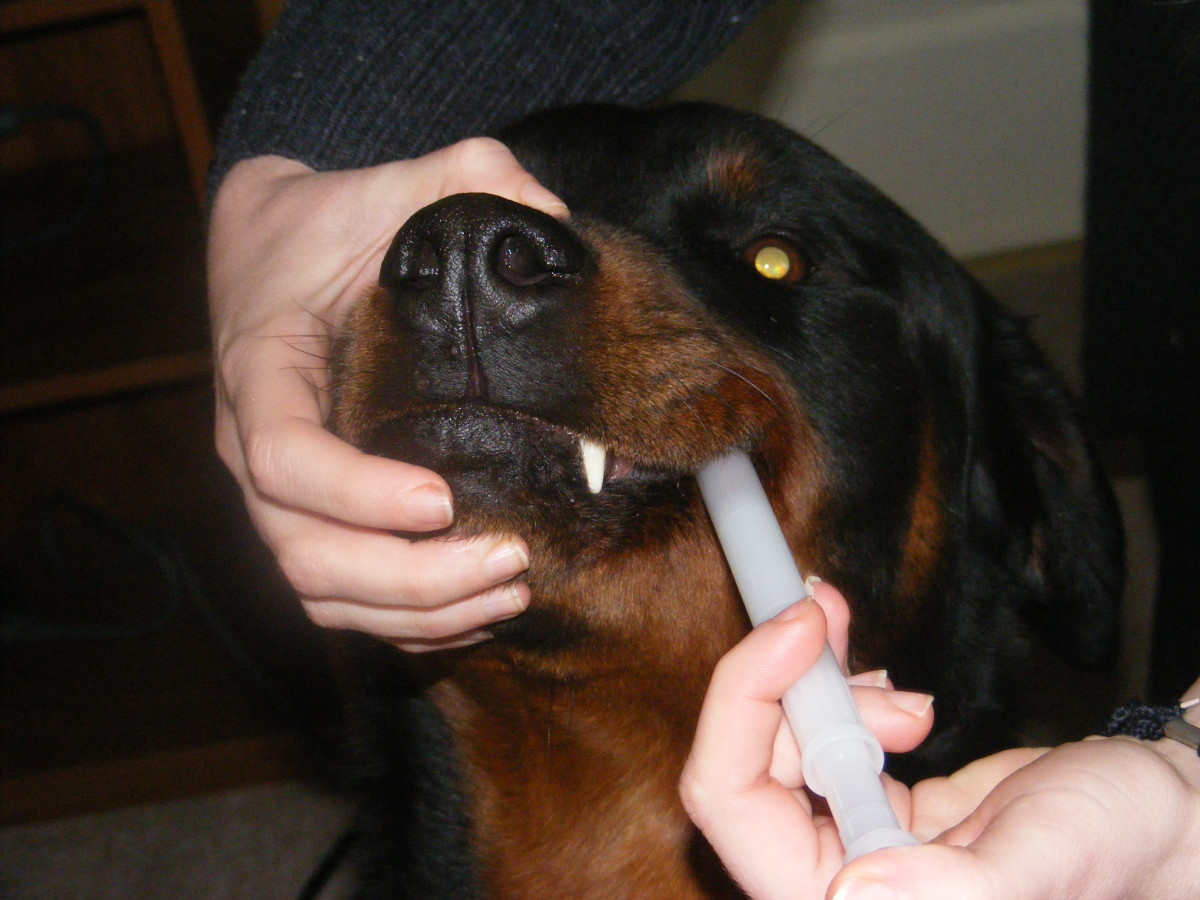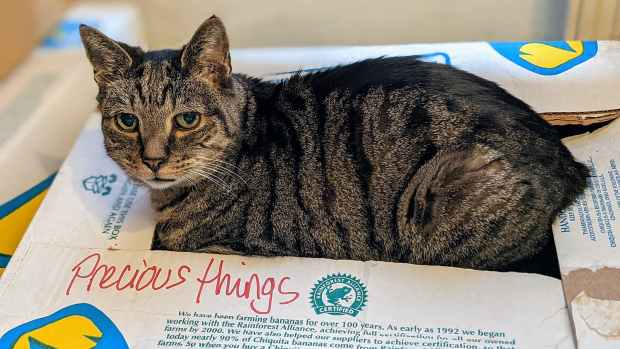Adrienne is a certified dog trainer and former veterinarian assistant who
partners with some of the best veterinarians worldwide.

Liquid Safe-Guard may be cost-effective for owners with many dogs.
Alexadry all rights reserved
Safe-Guard for Dogs
Deworming your dog is part of being a responsible dog owner. Whether you own a
puppy or adult dog, a purebred or a mutt, you know the threat of pesky
parasites is always there. Keep your dog and your family safe by administering
one of the most effective broad-spectrum deworming products on the market:
Safe-Guard liquid for canine companions.
What Is Safe-Guard and How Does It Work?
Safe-Guard is an FDA-approved anthelmintic, which is basically a drug used to
kill worms. Its main active ingredient is fenbendazole, which is effective
against roundworms, hookworms, whipworms, and certain tapeworms. Two of these
parasites (in particular, roundworms and hookworms) also pose health risks for
humans.
Safe-Guard works by basically disrupting the worm’s energy metabolism, and
because it attacks primarily the parasites and not the dog’s tissue, it is
very safe to use. You may or may not find dead worms in the dog’s stool after
using this product.
Safe-Guard is often used once or twice a year in adult dogs to prevent worms,
but there are different guidelines to follow depending on your dog’s age and
circumstances. For instance, breeders like to treat their dogs every other
month and before breeding, as to prevent the mother from passing the parasites
on to the pups. New puppy owners may deworm their puppies as per their vet’s
recommendations at 6, 8, 10, and 12 weeks of age, and then at least every six
months after the age of one. Consult with your vet about using Safe-Guard. For
a list of its side effects, check out this helpful guide from Veterinary
Place.
The Different Formulations of Safe-Guard
Fenbendazole comes in different formulations: fenbendazole granules,
fenbendazole liquid suspension, and fenbendazole paste. The most common
formulation of Safe-Guard on the market appears to be the Safe-Guard granules,
offered in convenient packets.
The liquid and paste formulations are mostly marketed for large animals but
are also used in dogs and cats by following a veterinarian’s dosage
instructions. The most common version of Safe-Guard liquid is the Safe-Guard
10% suspension horse/cattle dewormer which comes in a 1000 ml bottle and
contains 100 mg per ml of the active ingredient fenbendazole. This may be a
cost-effective product for people owning multiple dogs or a large kennel.
According to Susan Stack, (see reference below) a veterinarian practicing in
Yuma, Arizona, cattle Safe-Guard is exactly the same product as horse Panacur
suspension (10% Fenbendazole), and both are also made by the same manufacturer
(Hoechst). The canine dose of the horse Panacur suspension is 1 cc per 4
pounds given daily for three days. This means a 60-pound greyhound gets 15 cc,
whereas an 80-pound dog gets 20 cc daily for three days. If your veterinarian
recommended using Safe-Guard liquid for dogs, follow their dosage instructions
carefully. Afterward, you must find a good way to ensure you administer it
correctly.
How to Administer Liquid Safe-Guard to Dogs
Once your vet has supplied you with the correct dosage of Safe-Guard liquid
for dogs based upon your dog’s weight, you are ready to administer it to your
dog. This can be the tricky part. Some dogs will gulp down liquid medications
readily, but many may categorically refuse anything that has a suspicious
smell they do not trust.
If you own a dog of the latter category, what tricks can you use to fool your
dog into swallowing the medicine? There are many tricks of the trade.
Method 1: Mixing with Food
- If your dog is not on any dietary restrictions, your best bet is to administer the liquid fenbendazole directly on food. A good trick is to invest in some canned dog food. Most dogs, especially those fed dry food most of the time, find canned food irresistible.
- Offer your dog a little bit of canned dog food with no medication in it. This will help lower your dog’s suspicion index, suggests the Veterinary & Aquatic Services Department for Drs. Foster & Smith.
- Prepare the suspension according to package directions and dose the Safe-Guard as per your vet’s instructions using a dropper or oral syringe.
- Mix the liquid suspension thoroughly in your dog’s canned food. Do not give an entire meal, or you may risk your dog leaving some. Make a small portion that your dog will eagerly eat. If your dog refuses the food, try the next method.
Method 2: Administering by Mouth
- Prepare the Safe-Guard liquid for dogs as directed by package instructions. Dose using the dropper or oral syringe.
- Call your dog in a happy, but calm tone of voice.
- Use a wall for your convenience so your dog cannot back up.
- Ask your dog to sit and gently grasp your dog’s muzzle with one hand tilting it upward while with the other hand you insert the eyedropper or oral syringe into the pocket between your dog’s cheek and back teeth.
- Administer the medication slowly. If you go too fast, your dog may choke on it or vomit it back up.
- Keep the mouth shut for a bit and encourage swallowing by blowing into your dog’s nostrils or gently rubbing the dog’s throat until you feel the swallowing reflex.
- If your dog spits out the medication, do not administer a second dose unless you are absolutely certain your dog spit out the entire dose.
- Always remember to reward your dog for its cooperation with a tasty treat.
Important Consideration About Using Fenbendazole
Fenbendazole (brand name Safe-Guard or Panacur) is most likely not effective
given as a one-time treatment, even at higher dosages. Generally, in order to
be effective, fenbendazole must be given once a day for several consecutive
days, with the most common dosage in dogs and cats, being 25 mg per pound (50
mg/kg) given daily for three consecutive days. Even if your dog seems to be
feeling better, the whole course should be completed to avoid relapse.
While Safe-Guard liquid for dogs can be found over the counter, it is
recommended to administer it under the strict guidance of a veterinarian. The
best course of action is to submit a fresh fecal sample to your vet, so he or
she can determine exactly what parasites are found and therefore prescribe the
most effective dewormer accordingly. Your vet will also be the best source for
determining the best dosage of liquid dewormer for your pet.
References
- Pet Place, Dawn Ruben DVM: Fenbendazole
- Susan Stack DVM: Cheap Panacur for Dogs
- Intervet: Safe-guard for Dogs
- Vet Info: Treating Canine Parasites with Fenbendazole for Dogs
- Pet Education: Veterinary and Aquatic Services Department Drs. Foster & Smith – How to Give Liquid Medication to Dogs
Scroll to Continue
Read More From Pethelpful

Why Does My Cat Sit on My Stuff?

Tips for Home Care for Your Vomiting Cat When You Cannot Visit the Vet

The Top 10 Fastest Dog Breeds
This article is accurate and true to the best of the author’s knowledge. It
is not meant to substitute for diagnosis, prognosis, treatment, prescription,
or formal and individualized advice from a veterinary medical professional.
Animals exhibiting signs and symptoms of distress should be seen by a
veterinarian immediately.
Questions & Answers
Question: Is the dosage of 25mg per pound of Safeguard too high?
Shouldn’t it read 0.25 per pound?
Answer: I verified all my sources and must confirm that the dosage of
fenbendazole (Panacur Granules 22.2%) is 25 mg per pound. According to Dawn
Ruben of Pet Place: “For dogs and cats, 25 mg per pound (50 mg/kg) daily for
three consecutive days is usually effective.” To be extra exact, Merck Animal
Health posted on the product label “50 mg/kg (22.7 mg/lb) daily for 3
consecutive days for the removal of ascarids (Toxocara canis, Toxascaris
leonina), hookworms (Ancylostoma caninum, Uncinaria stenocephaia), whipworms
(Trichuris vulpis), and tapeworms (Taenia pisiformis)”.
Please visit the following sources for more information:
https://www.petplace.com/article/drug-library/drug… and
https://merckusa.cvpservice.com/product/basic/view…
As always, follow your veterinarian’s dosing directions to play it safe. A vet
should always be consulted before giving a dog medications.
Comments
WOODROW on May 11, 2019:
We use Ivermec 1% topical solution for heart worm prevention.
It can be bought OTC, and reasonably priced.
Lacey on October 30, 2018:
Ivermectin for heartworms…google it
Melisa on October 13, 2018:
It appears SafeGard does not kill the tapeworm that comes from fleas
(Dipylidium caninum), only the one that comes from rodents (TAENIA Worm). Is
this what you have found?
Mari on September 24, 2018:
Hi i want to no can i still deworm my pregnant dog she around 55 days
Jean Smith on February 08, 2018:
Question . I have never had a puppy bleed after taking a de-wormer until now.
Is this normal ?
Adrienne Farricelli (author) on July 07, 2016:
Brandi, You won’t find any products against heart worms over the counter. To
prevent heart worms, you will need a prescription from your vet after having
blood work done if you haven’t given it monthly.
Brandi on July 07, 2016:
I didn’t see heart worms listed. I have 2 dogs with them and am looking for
affordable treatment.